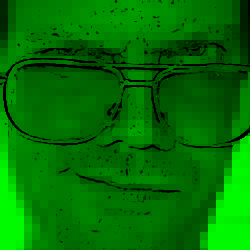Book Report: American Shaolin
Yestere'en, I watched the Chinese New Year's parade. I'm not into parades, but I visit a fair number of parades. Why show up an event I'm not into? A non-trivial fraction of my friends are photographers; they like to photograph parades; I like to hang out with my friends; thus my attendance logically follows. I'm not a photographer but I need something to keep me busy at these things. A few years ago, I started waving.
People in parades wave at the crowd. People on floats wave. Politicians riding in open-top convertibles wave. Beauty queens wave demurely. Banner-carriers wave. Small children, stumbling along in procession, wave adorably. Their parents, walking alongside, wave proudly. Sometimes, a few folks in the audience wave back. I always wave back. I smile and wave. Parade traffic is bursty; sometimes the parade stalls. Most folks in the audience who wave back at the parade stop waving when this happens; it's not easy to keep waving that long. Also, it's kind of awkward to keep waving at the same set of folks for a long time. I keep waving. I'm no stranger to awkwardness. A few years back, I wouldn't keep waving--I didn't have the endurance to keep going. But I got better, you know?
I kept practicing, parade after parade, year after year. I learned how to wave so that it's not so tiring. I learned a few different ways to wave; by "mixing it up," I can avoid straining my shoulder. At first my friends were embarrassed to be next to the big goofy waving guy. But there are advantages. Peter Tang, reviewing his photos from last night, pointed out that he got pretty good photos of the beauty queens, getting good shots of their faces. "They kept looking right at us--because you kept waving."
Gavin Newsom, mayor of San Francisco pointed me out last night: "He's got the wave down." Gavin Newsom, has marched in plenty of parades and has no doubt seen plenty of wavers. I don't agree with Newsom on many things, but I trust his judgment in this regard.
Late in the parade, the audience had thinned out. And most of the audience that was still there was tiring out. But I was still going, still waving, unflappable. A girl in the parade yelled at me: "Hey, you! You're the only one waving!" I'm not sure if she meant it as a compliment, but by golly I was pleased that I was still strong enough to maintain unwavering waving.
After the parade, I still had some strength left in my arms. I realized that I could have kept going. I'd only waved back at folks who'd waved. But now I thought: Next year, could I keep waving through the whole parade? This would involve waving at folks who wouldn't wave back, who'd be indifferent, who wouldn't appreciate it: martial artists, marching bands, perhaps even gaps in the parade devoid of people. This would be about four hours of waving.
Four hours is a lot. But I'd already progressed so far. And my only practice had been at parades. What if I trained? What if I practiced? We can teach our bodies to do great things if we practice.
I forget where I was going with this train of thought. Oh, right, physical training. Totally on topic for the book: American Shaolin.
A young man from Topeka dropped out of university to travel to the hinterlands of China and study martial arts at Shaolin Temple. This is his memoir. There is life in China. There is life in the martial arts community. There is a hint of life in a temple community. There are jokes. It starts with an insightful quote from Snow Crash about how young men think they can train to become the world's toughest ass-kicker. So you know that Matt Polly is well-versed in the classics.
This book is a good read. Apparently, this book was a best-seller last year. Probably you already heard of it. If you were going to read it, you probably read it before I did. But just in case, I'll point out: it was a fun read, it was well-written. Check it out.
Labels: book, china, journey to the east
